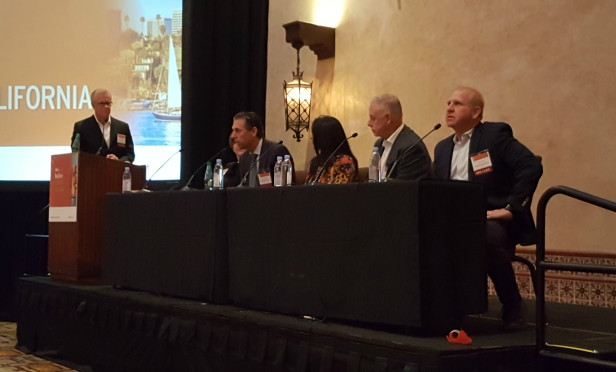 Multifamily has certainly been the favored asset class this cycle, but the exuberance may be waning. At RealShare Southern California, Kitty Wallace, EVP at Colliers International, said that properties are staying on the market longer, and in some cases for months. She spoke on the Multifamily—Overcoming the Affordability Crisis panel, and touched on the multifamily investment activity.
Multifamily has certainly been the favored asset class this cycle, but the exuberance may be waning. At RealShare Southern California, Kitty Wallace, EVP at Colliers International, said that properties are staying on the market longer, and in some cases for months. She spoke on the Multifamily—Overcoming the Affordability Crisis panel, and touched on the multifamily investment activity.
While properties are taking longer to trade, Wallace said that everyone is still a buyer in the market, and the demand remains strong. “Everyone is a buyer,” she said on the panel. “The market isn't like it was three or four years ago when you could put properties on the market and get multiple offers. Today, overpriced properties aren't moving, because the market isn't what it used to be.”
Janet Neman, senior managing director at Charles Dunn Co. who also spoke on the panel, said that it is different for institutions and private or high net worth investors, who a looking at different metrics. “IRR comes in when you are dealing with institutions,” she said. “Most investors are looking to hold for three years, and most buyers believe that rents are going to increase.”
On the development panel—Uncovering Hotspots, Identifying Development Opportunities in Southern California—speakers said that the investment demand in Southern California overall is not waning, and rather, the market is a top choice for investment. “L.A. has garnered the top spot for investment. It doesn't seem to be stopping,” the moderator, Marcus Arredondo, corporate managing director at Savills Studley, said on the panel. Rick Raymundo, senior managing director of investments at Marcus & Millichap added that demand is spilling over into five new emerging markets: Westlake, Highland Park, Silverlake, Koreatown and Echo Park, and the southern part of North Hollywood.
The common factor between those markets is access to transit. For developers, that is crucial because it reduces the parking requirements. “These areas may not work for development because of the space you need for parking requirements,” added Simon Aftalion, development director at Markwood Enterprises. “When you start getting close to transit, and with TOC, you can start getting rid of the parking requirements.”
Back on the multifamily panel, Jim Andersen, SVP at Trammell Crow Co., said that all may be changing as living becomes more communal. “The millennial generation is clever in that they are buying smaller and smarter,” he said. I am seeing more communal living. We are on the edge of a technological breakthrough. We may build our last parking structure soon.” Trammell Crow is building dormitory-style apartment communities that are built for roommates, and he expects to see more of this living style in the future.
© 2025 ALM Global, LLC, All Rights Reserved. Request academic re-use from www.copyright.com. All other uses, submit a request to [email protected]. For more information visit Asset & Logo Licensing.







